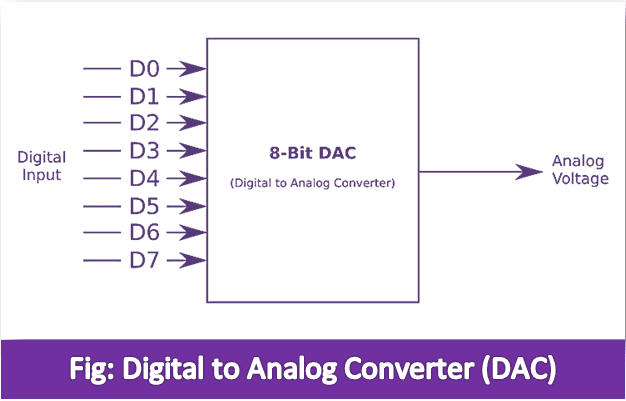Digital to Analog Converter (DAC):
In many applications, the microprocessor has to produce analog signals for controlling certain analog devices. Basically, the microprocessor system can produce only digital signals.
In order to convert the digital signal to an analog signal a Digital-to-Analog Converter (DAC) has to be employed. The DAC will accept a digital (binary) input and convert it to analog voltage or current. Every DAC will have “n” input lines and analog output. The DAC requires a reference analog voltage (Vref) or current (Iref) source.

Components of a DAC:
The basic components of a DAC are a resistive network with appropriate values, switches, a reference source and a current-to-voltage converter The switches in the circuit can be transistors that connect the resistance either to ground or Vref. The resistors are connected in such a way that for any possible binary input, the total current is in binary proportion.
The time required for converting the digital signal to an analog signal is called conversion time. It depends on the response time of the switching transistors and the output amplifier. If the DAC is interfaced with the microprocessor then the digital data (signal) should remain at the input of the DAC, until the conversion is complete. Hence, it holds the data a latch is provided at the input of DAC.
Example: The Digital-to-Analog converters compatible with microprocessors are available with or without an internal latch and I-to-V converting amplifier. The AD558 of Analog Device is an example of an 8-bit DAC with an internal latch and I-to-V converting amplifier. The output of AD558 is an analog voltage signal.